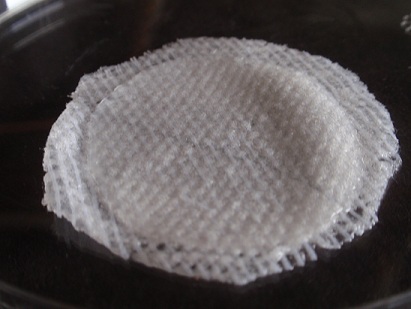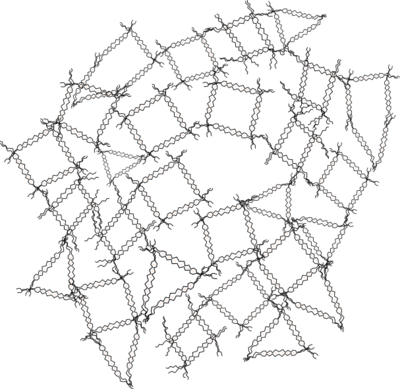Molecular Playground/Alginate-Fall2011
From Proteopedia
One of the CBI Molecules being studied in the University of Massachusetts Amherst Chemistry-Biology Interface Program at UMass Amherst and on display at the Molecular Playground.
Alginate is a natural, linear, organic polymer isolated from bacteria and algae. It has been shown to be biocompatible (non-toxic to human cells) and has thus found numerous applications as a thickener in food processing and biomaterial for tissue engineering. Owing to its unique physical properties, alginate hydrogels have been used as a scaffold material for building artificial organs, as a dressing for ulcerous wounds and as a vector for the targeted delivery of anti-cancer drugs.
Alginate is composed of a random sequence of mannuronic acid (M) and guluronic acid (G). Exposure to divalent cations (e.g. calcium, barium, etc.) causes the guluronic acid residues to chemically cross-link, and the ensuing entanglements cause the alginate solution to form a hydrogel. Alginate can vary widely in length, monomeric sequence and G/M ratio depending on the source and native climate. The ratio of G/M in the chain influences the strength of alginate hydrogels and can be tuned by combining alginate obtained from different organisms and locations. The rotating molecule to the right is an example of a short chain of sodium alginate.
Molecular Playground banner: A short, linear chain of sodium alginate.
|



